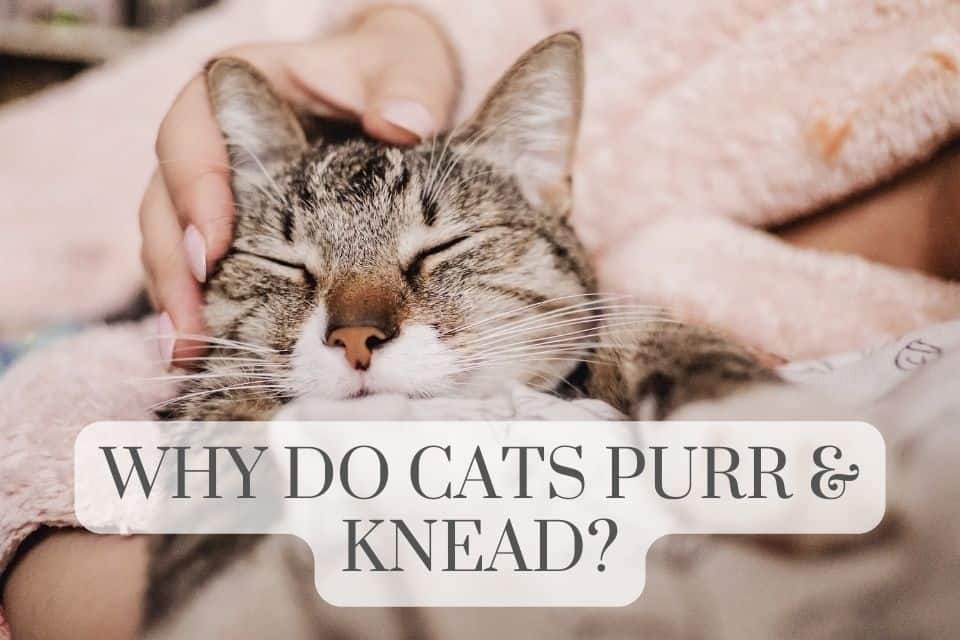Cats
Why Do Cats Purr and Knead on Their Humans?
Cats are fascinating creatures that can provide hours of entertainment.
Their unique movements and funny mannerisms are so different to our own. It’s no wonder we enjoy watching them so much!
So, when your kitty starts purring at you or kneading on your leg, you may be curious why. Their behaviour can be such a mystery to us. What is your cat trying to say?
Let’s take a look at some possible explanations…
What is Purring?
Purring is the soft rumble noise that cats make.
The noise is produced when a cat’s laryngeal muscles dilate and constrict, causing the air they breathe to vibrate. They will purr at a frequency of 20-30 vibrations per second.
Purring is believed to be partly instinctive and partly voluntary.
It is not only domestic cats that purr. Animals known to purr include foxes, bears, raccoons, gorillas, lemurs, and small wild cats such as cougars, ocelots and bobcats. Most big cats, such as tigers and lions, cannot purr.
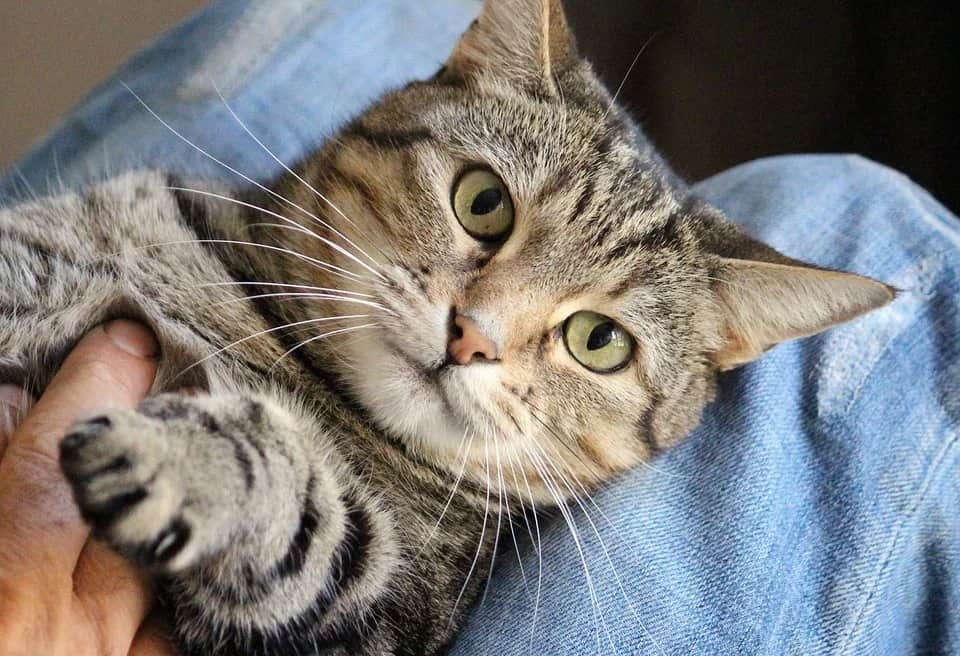
Purring
Purring is the soft rumble noise that cats make
Why Do Cats Purr?
While cats purr for a variety of reasons, they are usually purring in an attempt to communicate something.
Reasons cats purr include:
Happy
Cats purr when they feel relaxed and content. Think of their purr as their smile! You may hear cats happily purr when they are eating, drinking or getting pats from their owner.
They may also happily purr when they are excited to see you, like when you first get home from work.
Calm Themselves
Cats purr as a way to self-soothe and calm themselves. The vibrations can help to relax their muscles and therefore help them feel less stressed.
You may hear this when your cat is anxious, such as during car trips or at the vet. Cats may also purr when they are in pain to help feel better. Some scientists believe that purring can actually promote healing if the cat is injured.
Asking for Something
Cats purr as a way of communicating with you and asking for something. You may often hear this one when it is dinner time!
This purr is shorter and higher pitched, making it sound more urgent.
Mother and Kitten
Mother cats and kittens will purr to one another as a way of communicating and recognising one another.
Kittens are born deaf and blind so the only way they are able to recognise their mother is through her purr’s vibrations.Kittens first begin to purr at just a few days old.
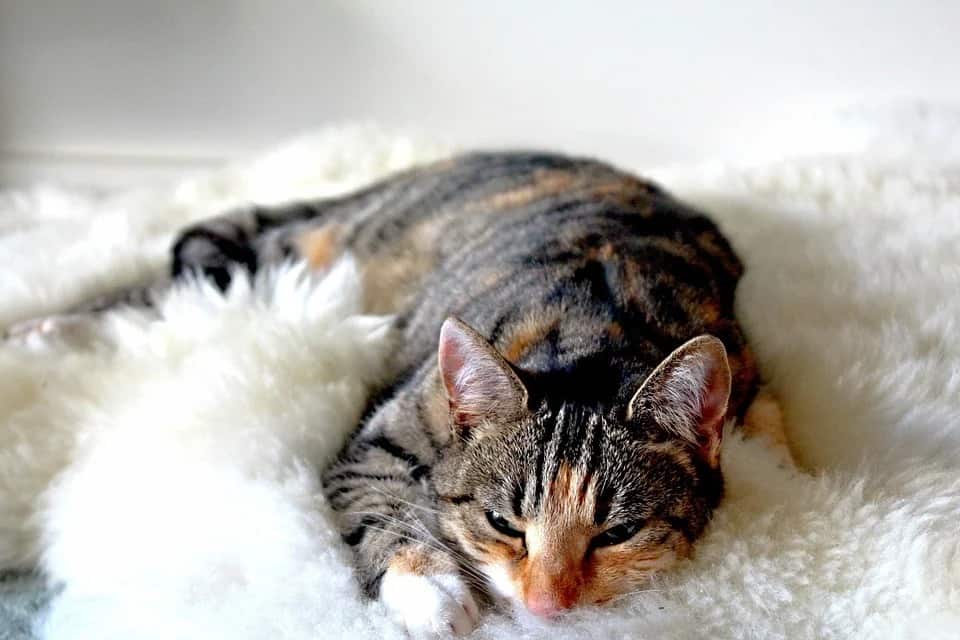
Kittens Kneading
Kittens first begin to purr at just a few days old
What is Kneading?
Kneading is when a cat pushes and pulls its front paws against a surface. It will alternate between the left and right paw. When the cat’s paw hits the surface, it will tense to grip the surface.
This is also known as ‘making biscuits’ or ‘baking’ because it looks as though the cat is kneading dough.
Cats commonly knead on household objects, such as furniture or rugs. They may also knead against your skin which can hurt.
Why Do Cats Knead?
When your cat kneads against you, know that it is not intentionally trying to hurt you. There are several reasons that cats knead:
Kittens Nursing
Kittens will knead against their mother while nursing. This is believed to assist in pumping milk and also provide comfort for the kittens knowing their mother is within paws reach.
Adult cats may instinctively knead as a hang up from their kitten days.
Stretching
Kneading helps cats to stretch out their front legs and paws. You may often see cats knead after they first wake up.
Affection
Some people believe that cats knead against their owners as a sign of affection. They are touching you because they love you and are trying to communicate positive feelings towards you.
Sadly, they don’t understand that kneading with their claws can actually hurt you. So never punish a cat for kneading against you. It means well!
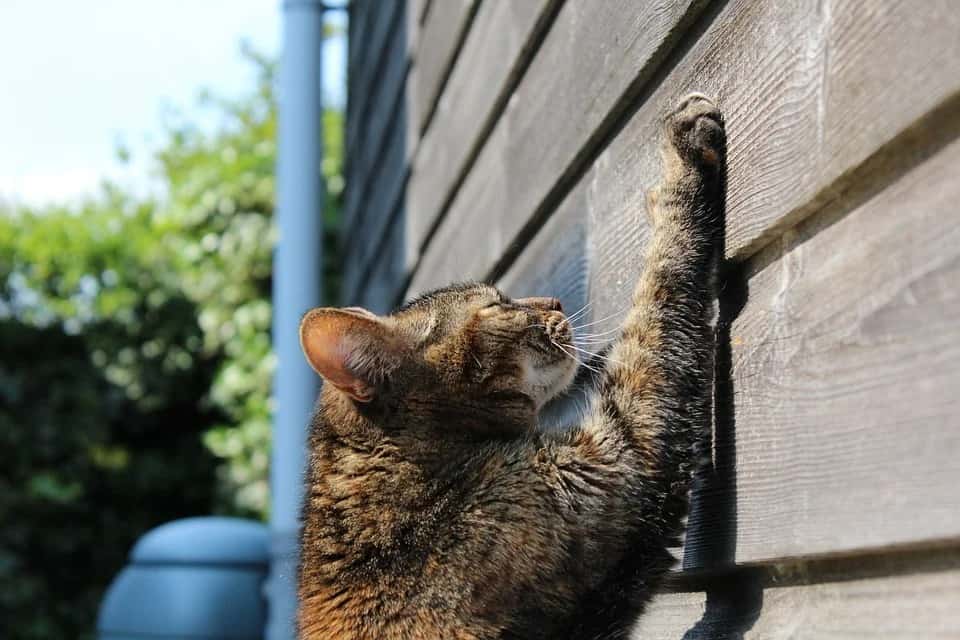
Kneading is natural
While kneading is a natural behaviour, it can be frustrating for owners.
Nesting
Prior to becoming domesticated, wild cats would use their front paws to tread down grass to create a comfortable place to sleep.
Many scientists believe that modern domestic cats are instinctively kneading as a hang up from this.
It is similar to a dog spinning around in a circle before going to sleep.
Marking Their Territory
Cats have scent glands inside their paws that release a unique scent. When a cat kneads against something, it marks this scent onto the object as a way of marking their territory.
Other cats will be able to smell this scent and know that a specific cat has been there recently. It is similar to dogs peeing on things.
Mating
A female cat may knead on a male cat when she is in heat. This is her way of letting him know she is ready to mate. Consider it cat flirting!
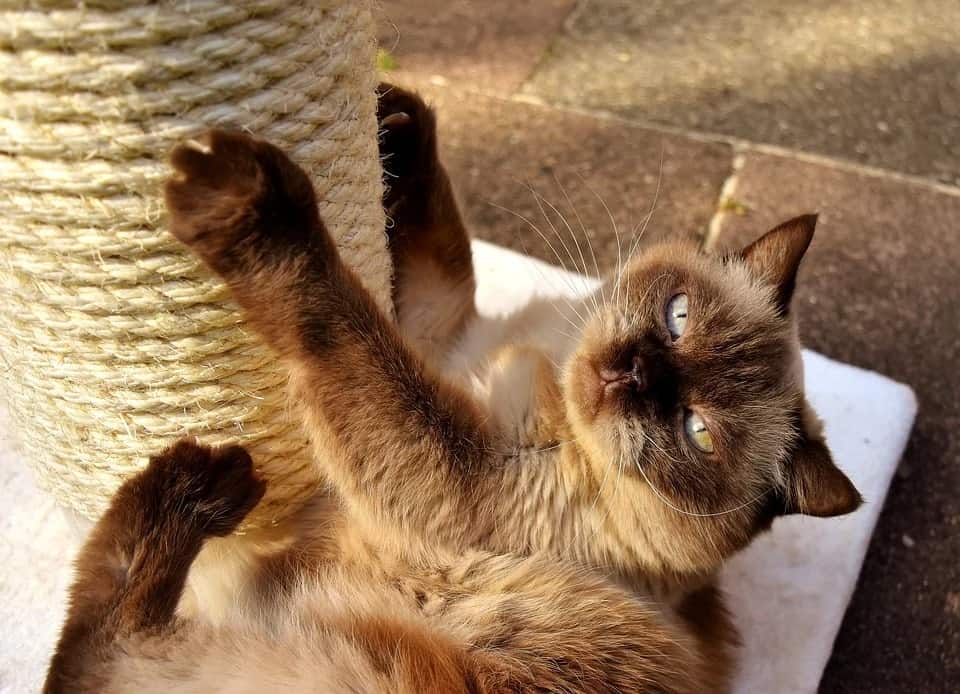
Cat Scratching Posts
Scratching post that contains both a plush surface and sisal rope.
Problem Kneading?
Some cats will extend their claws as they hit the surface they are kneading against.
This can damage your furniture, carpet or clothing. If they do this on your skin, it can be painful for you.
Unfortunately, you cannot stop a cat from kneading. But you can re-direct its kneading onto a more appropriate surface.
We recommend purchasing your cat a scratching post that contains both a plush surface and sisal rope.
These are the two most common surfaces that cats enjoy kneading onto so it will attract them while also keeping them entertained for hours.
Sisal rope is also great for wearing down a cat’s sharp claws. If their claws are less sharp, it won’t hurt as much if they do decide to knead on your leg.



